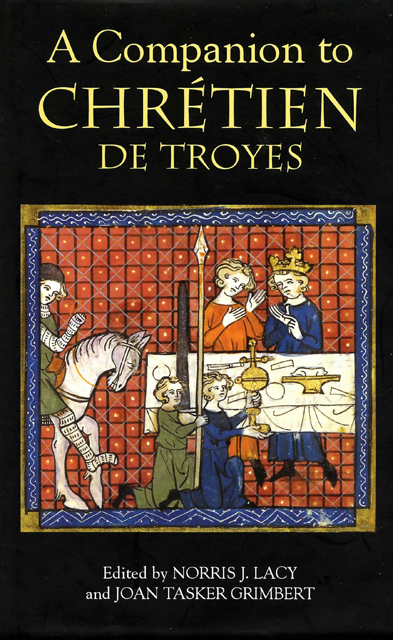16 - Chrétien’s Medieval Influence: From the Grail Quest to the Joy of the Court
Published online by Cambridge University Press: 23 March 2023
Summary
From the very beginning of Erec et Enide – ‘Un jor de Pasque, au tens novel, / A Caradigant son chastel / Ot li rois Artus cort tenue’ [One day at Easter, in the new season, King Arthur held court in his castle of Caradigan] – Chrétien de Troyes plunged the Arthurian world, which Geoffrey of Monmouth had conceived in historical terms, into the realm of fiction. The mention of Arthur and his court, the choice of a ‘cyclical’ feast day, the evocation, shortly thereafter, of the unusual custom of the hunt for the white stag, the hierarchical list of the knights of the Round Table, all sketched out an immutable world for generations of readers and writers, a world that existed prior to the group of narratives that modern critics refer to as ‘Arthurian romances’. From one romance to the next, indeed, first those of Chrétien then those of his successors, the same characters will reappear repeatedly and within an identical framework. Within this space, a new type of hero, the knight errant in quest of adventure, is created and perpetuated. These adventures, with their apparently gratuitous nature and frequent ties to the merveilleux [marvellous], alone determine the narrative's course of action and meaning. However, the last romance of Chrétien, the Conte du Graal, partially breaks with this type of narrative that seems to have immediately found and captivated its audience. By giving a literary existence to a hero, Perceval, who is as new as he is nice [naïve], and to such curious objects as the Grail, the bleeding lance, or the broken sword (which must be mended), Chrétien introduced into the field of fiction a character and a motif, the Grail quest, that fed extremely diverse forms of literary and artistic creation for centuries, even until our own time.
Among the authors who, from the end of the twelfth century, followed Chrétien's lead in associating the composition of verse romances with Arthurian themes, several – the authors of the Continuations of the Conte du Graal – undertook the task of concluding the Grail quest and fulfilling Perceval's destiny. Even more writers remained within the spatial/temporal framework inherited from Chrétien, seeking to exploit its resources. Multiple reasons exist for this early interest, which would last until the end of the thirteenth century.
- Type
- Chapter
- Information
- A Companion to Chrétien de Troyes , pp. 214 - 228Publisher: Boydell & BrewerPrint publication year: 2005



